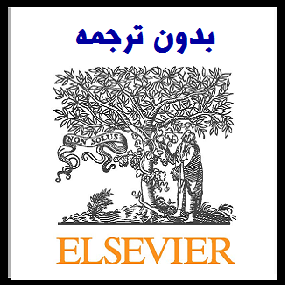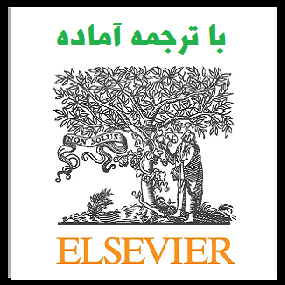مقاله انگلیسی بهبود مقاومت سنسور فیبر نوری مبتنی بر تحلیل انتقال کششی (2018 الزویر)


| عنوان فارسی مقاله | بهبود مقاومت سنسور فیبر نوری مبتنی بر تجزیه و تحلیل انتقال کششی |
| عنوان انگلیسی مقاله | Improving the durability of the optical fiber sensor based on strain transfer analysis |
| فهرست مطالب | Abstract ۱ Introduction ۲ Optical fiber based sensors with enhanced performance ۳ Strain transfer analysis ۴ Strain perturbation induced by the embedment of optical fiber sensor ۵ Influence of local interfacial debonding on the strain transfer ratio ۶ Parametric studies ۷ Conclusions References |
| نمونه مقاله انگلیسی | Introduction
The structural safety of civil infrastructures, ocean platforms and aerospace structures has received increasing attention, because the failure of those important structures usually leads to large abundant of casualties and economical loss. To characterize the structural performance, structural health monitoring (SHM) technology has been recognized as one of the most effective and intelligent measures [18,19,1,23,22,10,7]. By the use of smart sensors and components, the real-time, long-term and continuous information of the in-situ structures can be provided for the damage identification, disaster forecasting and warming, and safety and life-time assessment [35,17,20,16,26]. Among these smart sensing elements, optical fiber based sensors are the most popular in civil engineering for the unique advantages of high sensitivity and precision, corrosion resistance, anti-electromagnetic interference, good stability, geometrical shape-versatility, absolute measurement and convenient integration of network [25,34,32,12]. For the brittle material properties of silica fiber, bare optical fiber is weak to resist the shear or torsion force in structural construction and operation. Especially for the embedded case, the packaging technique is the most critical factor to guarantee the survival and enhance the durability of optical fiber based sensors. However, the existence of the protective layer introduces the intermedium between the sensing fiber and the monitored structure, which makes the strain measured by the sensor not entirely represent the actual strain of host material [2]. The error between the measured strain and the actual strain is attributed to the strain loss in the transferring path. To eliminate the strain transfer error and improve the measurement accuracy of optical fiber based sensors, strain transfer theory has been developed to establish the quantitative relationship of strains between the host material and the optical fiber [13,33,9,28]. Considerable attempts have contributed to studying the strain transfer mechanism of optical fiber sensors. The earliest research started from the 1990s, and the strain relationship between the concrete and sensing fiber was studied with a polymer-to-glass modulus ratio of 1/200 given [21]. Host material with optical fiber sensor embedded was then simplified to infinite elastic cylinder model, and plane-strain theory was adopted to explore the strain transfer mechanism [24]. However, the simplified model in the two theories couldn’t be used to accurately determine the strain transfer relationships for various host materials with non-elastic behavior. In 1998, a systematic strain transfer theory of a three-layered structure embedded with optical fiber sensor was established [3]. To analyze the effects of a local interfacial slippage on the strain transfer ratio, a two-layered mechanical model consisted of host material and optical fiber was discussed [13]. For a multi-layered structure with various packaging layers, the unified strain transfer formula was conducted [33]. The improved strain transfer deduction of a three (multi)-layered sensing model by the use of simplified geometrical and physical functions was proposed [15]. Strain transfer analysis was also extended to special cases for considering the viscoelastic material properties of the monitored structure [30]. |
| نمونه ترجمه کامپیوتری | مقدمه
ایمنی ساختمانی زیرساخت های مدنی، سیستم های اقیانوس و سازه های هوا فضا توجه بیشتری را به خود جلب کرده است، زیرا شکست این سازه های مهم معمولا به تلفات زیاد و تلفات اقتصادی منتهی می شود. برای مشخص ساختن عملکرد ساختاری، تکنولوژی مراقبت های بهداشتی سازمانی (SHM) به عنوان یکی از اقدامات موثر و هوشمند شناخته شده است [18،19،1،23،22،10،7]. با استفاده از سنسورهای هوشمند و اجزای سازنده، اطلاعات زمان واقعی، طولانی مدت و مستمر ساختارهای داخلی را می توان برای تشخیص صدمه، پیش بینی وقوع فاجعه و گرمایش، و ارزیابی ایمنی و عمر [35،17 ، 20،16،26]. در میان این عناصر حساس هوشمند، سنسورهای مبتنی بر فیبر نوری، محبوب ترین در مهندسی عمران هستند برای مزایای منحصر به فرد از حساسیت بالا و دقت، مقاومت در برابر خوردگی، تداخل ضد الکترومغناطیسی، ثبات خوب، هندسه شکل تنوع، اندازه گیری مطلق و ادغام مناسب شبکه [25،34،32،12]. برای خواص مواد شکننده فیبر سیلیس، فیبر نوری با ضخامت برای مقاومت در برابر نیروی برشی یا پیچشی در ساخت و ساز ساختاری و عملیات ساختاری ضعیف است. به ویژه برای مورد جاسازی شده، روش بسته بندی مهمترین عامل برای تضمین بقا است و دوام حسگرهای فیبر نوری را افزایش می دهد. با این وجود، وجود لایه محافظی، میان فیبر حسگر و ساختار نظارت شده را نشان می دهد که باعث می شود که فشار توسط سنسور اندازه گیری شود، اما نه کاملا شبیه واقعی مواد میزبان [2]. خطای بین فشار اندازه گیری شده و فشار واقعی مربوط به کاهش فشار در مسیر انتقال است. برای از بین بردن خطای انتقال فشار و بهبود دقت اندازه گیری از سنسورهای مبتنی بر فیبر نوری، تئوری انتقال فشار برای ایجاد رابطه کمی بین مواد میزبان و فیبر نوری توسعه یافته است [13،33،9،28]. تلاش های قابل توجهی به مطالعه مکانیسم انتقال فشار از سنسورهای فیبر نوری کمک کرده است. اولین تحقیق از دهه 1990 شروع شد و نسبت فشار بین بتن و فیبرهای حساس با نسبت مدول پلیمری به شیشه 1/200 مورد بررسی قرار گرفت [21]. سپس مواد مغناطیسی با سنسور فیبر نوری تعبیه شده به مدل سیلندر الاستیک بی نهایت ساده شده و به منظور کشف مکانیزم انتقال کرنش تئوری کشش هواپیما مورد استفاده قرار گرفت [24]. با این وجود، مدل ساده شده در دو نظریه نمیتواند برای تعیین دقیق روابط انتقال فشار برای مواد مختلف میزبان با رفتار غیر الاستیک استفاده شود. در سال 1998، یک نظریه انتقال سیستماتیک کششی از یک ساختار سه لایه که توسط سنسور فیبر نوری تعبیه شده بود، ایجاد شد [3]. برای تجزیه و تحلیل اثر یک لغزش بین فضای محلی بر روی نسبت انتقال کرنش، یک مدل مکانیکی دو لایه شامل مواد میزبان و فیبر نوری مورد بحث قرار گرفت [13]. برای یک ساختار چند لایه با لایه های بسته بندی مختلف، فرمول انتقال یکپارچه سلول انجام شد [33]. پیشنهاد شده است که کسر انتقال کلاسیک بهبود یافته یک مدل حسگر سه (چند) لایه با استفاده از توابع هندسی و فیزیکی ساده ارائه شده است [15]. تجزیه و تحلیل انتقال فشار نیز به موارد خاص برای در نظر گرفتن خواص مواد ویسکولا الاستیک از ساختار مانیتور شده گسترش یافته است [30]. توجه؛ (این ترجمه توسط نرم افزار انجام شده و ویرایش نشده است و احتمال وجود اشتباه در آن وجود دارد. در صورت ثبت سفارش، ترجمه توسط مترجمین مجرب انجام خواهد شد. برای مشاهده نمونه ترجمه های تخصصی و اخیر مترجمین جهت اطمینان از کیفیت ترجمه، اینجا کلیک نمایید.) |
| سال انتشار | 2018 |
| ناشر | الزویر |
| مجله | فناوری فیبر نوری – Optical Fiber Technology |
| کلمات کلیدی | سنسور فیبر نوری، خواص پیوند سطحی، تحلیل انتقال فشار، شکست گسیختگی فضایی، اصلاح خطا، طراحی برنامه |
| کلمات کلیدی انگلیسی |
Optical fiber sensor, Interfacial bonding properties, Strain transfer analysis, Interfacial debonding failure, Error modification, Application design |
| صفحات مقاله انگلیسی | 8 |
| مناسب برای رشته | مهندسی برق |
| مناسب برای گرایش | برق مخابرات |
| توضحیات | این مقاله انگلیسی جدید بوده و تا کنون ترجمه نشده است. جهت ثبت سفارش ترجمه از لینکهای زیر استفاده نمایید. |
| دانلود مقاله انگلیسی | ○ دانلود رایگان مقاله انگلیسی با فرمت pdf (کلیک کنید) |
| سفارش ترجمه فارسی | ○ سفارش انجام ترجمه و تایپ این مقاله (کلیک کنید) |
| سایر مقالات این رشته | ○ مشاهده سایر مقالات رشته مهندسی برق (کلیک کنید) |




